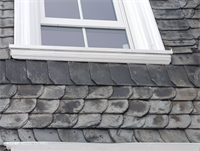How do I check an angle with the reversal measurement?
![]() The reversal measurement, often referred to as the reversal method, is a very simple and accurate method of checking the accuracy of a 90° angle. The reason why the reversal measurement is so accurate is that the accuracy of the measurement does not depend on a second test angle. A plate with a straight edge, a pencil and a calliper are all that is needed for this simple method. This method can be used to check all angles, e.g. carpenter's squares, joiner's squares, locksmith's squares, bricklayers' squares and many more.
The reversal measurement, often referred to as the reversal method, is a very simple and accurate method of checking the accuracy of a 90° angle. The reason why the reversal measurement is so accurate is that the accuracy of the measurement does not depend on a second test angle. A plate with a straight edge, a pencil and a calliper are all that is needed for this simple method. This method can be used to check all angles, e.g. carpenter's squares, joiner's squares, locksmith's squares, bricklayers' squares and many more.
Read more...
Why doesn't the carpenter's square have a right-angled end?

In the past, it was common to decorate window frames and doors with stucco. This can still be admired on many old buildings today. The curved end of the carpenter's square possibly served as a kind of template and thus helped in the production of the decorative frames.
The picture shows a carpenter's square as they were made in the Ernst Haas factory in Wuppertal until around 1965 and the profile at the end of the square that was common at the time.
To make the brackets, 5 mm thick material was heated red-hot in a forge and drawn to the desired length with a forging hammer. This gave the long leg of the carpenter's square the conical shape that was common in the past (tapering from 5 to 2 mm). The legs were then cut to width and finished with a whetstone. The curved end was stamped with a punch on the press.
Read more...
Carpenter's square as an OEM product - private label production at hedue
![]()
Would you like to sell carpenter's squares under your own brand?
As an OEM partner (Original Equipment Manufacturer), we at hedue manufacture high-quality carpenter's squares that you can offer with your own brand name and logo.
The term OEM means that we develop and produce the product as the manufacturer - but you appear as a dealer or brand with your own name. This allows you to combine your market presence with our manufacturing quality.
Whether as an extension of your own brand, for specialist retailers or as an exclusive product for your customers: We offer you customized OEM solutions with the precision that hedue stands for.
Read more...